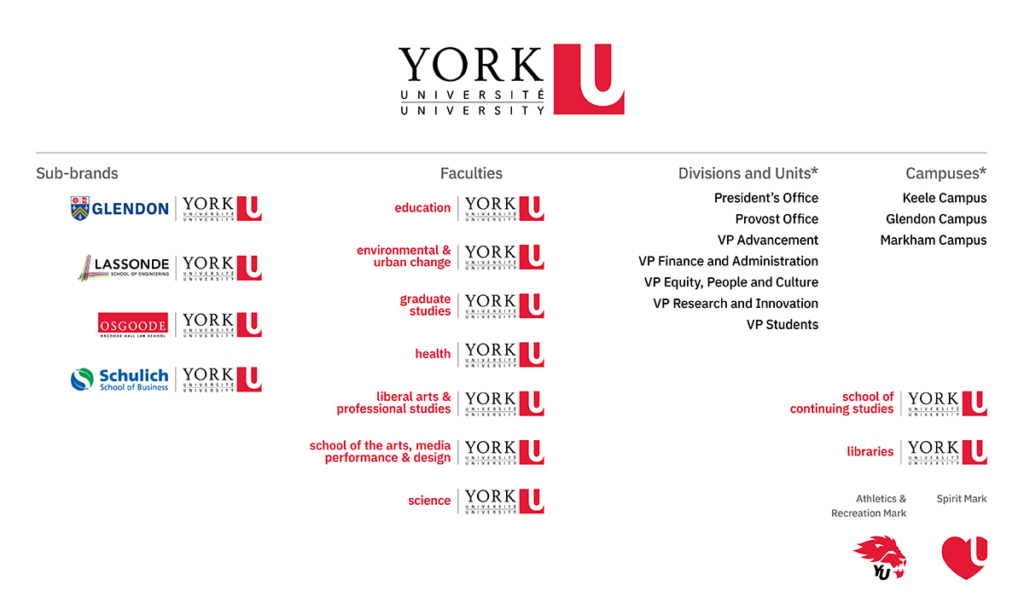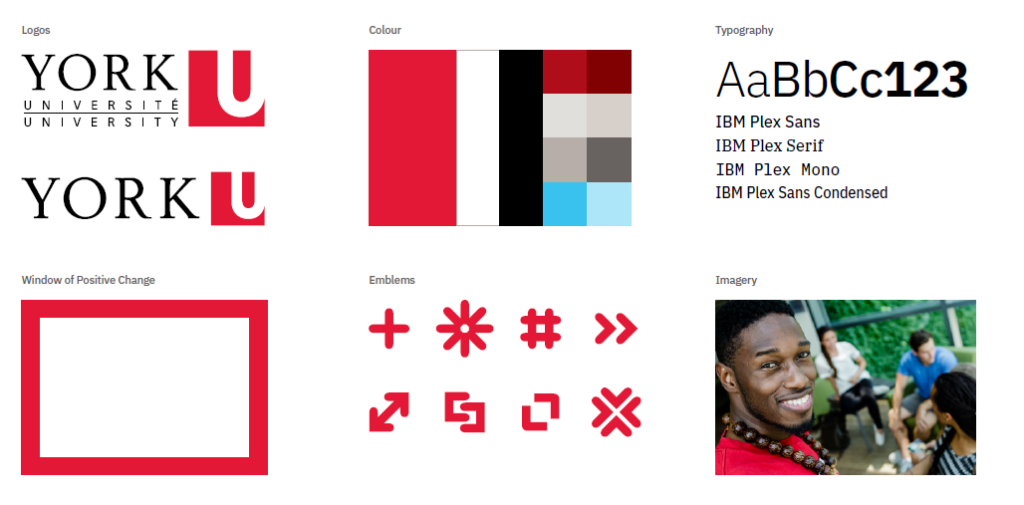This website as a whole is a comprehensive tool to help you understand and learn how to use York University’s brand. Our brand defines how we communicate with our current and prospective students, internal and external audiences, and the world. By applying the elements thoughtfully and consistently, we will strengthen our brand and tell the story of a unified York.
This page serves as a general overview and snapshot of our Brand and why it is important.
Brand Overview
Learn more about our brand and why it is so important. Brand is not just about advertising, it is about weaving our brand through our daily activities and keeping it top of mine in all of the work that we do at York.
Brand Components
The Brand Architecture, the visual identity and messaging guide below outline the York University Brand system.
YU Usage, Brand Campaign and Tagline
YU is defined as a proprietary entity in York’s Brand Stewardship Policy and procedures and therefore has a list of acceptable usage cases and required approvals from Communications & Public Affairs.
Official Raptors Partnership
York University is the Official University Partner of the Toronto Raptors. To learn more about this partnership, submit ideas and event requests, or to gain access to official logos please fill out the online submission form.
Accessibility
York University is committed to principles of respect, inclusion and equality of all persons with disabilities across campus. The Accessibility For Ontarians With Disabilities Act (AODA) issued by the Ontario government aims to make Ontario fully accessible to persons with disabilities by 2025.


